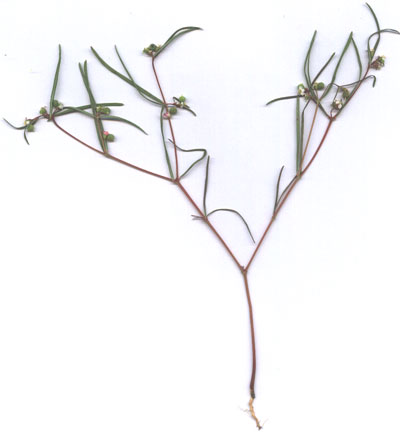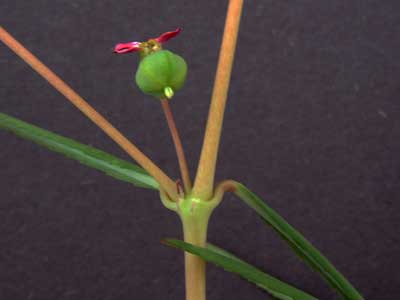Chiricahua Mountain Sandmat
Chamaesyce florida

Rackensack Canyon, Maricopa County, Arizona, USA on 03 Aug. 2008. A full resolution scan image has been contributed to Wikimedia Commons.
Sponsored Links:
RANGE: Found on rocky slopes and along washes in canyons from central
Arizona through southeastern Arizona. In the Sonoran Desert mostly at the upper
elevations above 900 m.
ANNUAL: Upright herbaceous annual appearing with warm weather depending
on available moisture. Generally less than 50 cm.
LEAVES: The leaves are linear and are opposite on the stems. Checking
the leaves with good magnification will reveal minute teeth along the margins. Copious white sap erupts from any tear or break.
FLOWERS: What at first appears to be a lovely little flower barely a
4 mm in diameter is actually an involucre enclosing a number of male
staminate flowers and one pistillate female flower. The surrounding glands and
the white to pink lobed appendages form the rim of the vase-shaped involucre.
FRUIT: Capsules are relatively large and are smooth, without hairs, ca.
2 mm.
UNARMED: No thorns, but the milky sap can be a skin/eye irritant.
Euphorbiaceae -- Spurge Family
More Information:
- Southwest Environmental Information Network
- Firefly Forest
- USDA Plant Profile
- ITIS Taxonomic Report
- Google Images
- Google Scholar Literature Search

An involucre with developing fruit, a capsule with three seeds. Catalina State Park, July 2016.